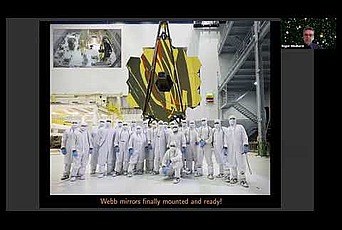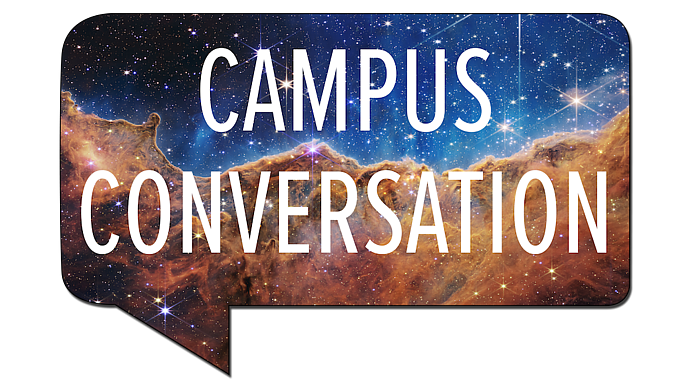
IAS Scholars on the James Webb Telescope’s First Images
“Today represents how science and technology help us see and understand the vast universe around us—and our place within it.”
—Alondra Nelson, Harold F. Linder Professor in the School of Social Science (via Twitter, July 11, 2022)
On July 11, 2022, NASA released the first full-color images from the James Webb Space Telescope, the highest-resolution infrared images of the universe that have ever been obtained. The telescope (often known as JWST) was launched on December 25, 2021. Before it reached its ultimate orbit—one million miles from Earth—JWST unfurled like a butterfly to gather infrared light arriving from the outer reaches of the observable universe.
Thousands of engineers and hundreds of scientists from 29 U.S. states and 14 countries worldwide worked to bring the telescope project to fruition. Furthermore, Alondra Nelson, Harold F. Linder Professor in the School of Social Science, who currently serves as Deputy Assistant to the President and is leading the White House Office of Science and Technology Policy, joined NASA Administrator Bill Nelson and several project leaders in briefing President Joseph Biden and Vice President Kamala Harris prior to the televised broadcast revealing the images to the world.
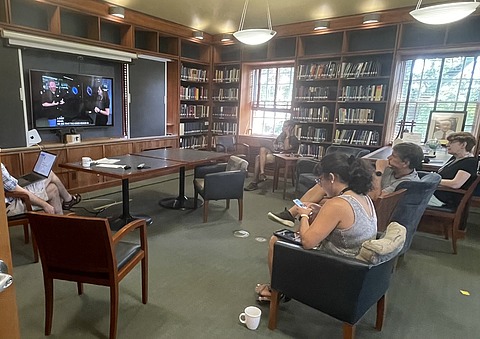
The broadcast, shown live from NASA’s Goddard Space Flight Center in Greenbelt, Maryland, was watched by the IAS astrophysics group at a special edition of their regular 11:00 a.m. coffee meeting. Around 15 Members, Visitors, and Faculty gathered for the informal event. The images have generated dialogue across the campus, extending beyond scholars in Natural Sciences.
The following quotes from Faculty, Members, and Visitors across all four IAS Schools demonstrate the breadth of discussion:
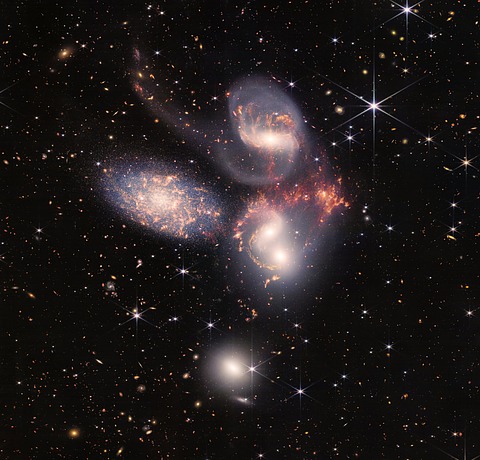
“On the one hand, the amazing photographs generated by the James Webb Space Telescope form a critical chapter in the millennia-old history of humans exploring space with a view to better understand our origins and indeed ourselves. On the other hand, they represent yet another example of the way in which the natural sciences and the humanities are linked. One of course thinks here of the works of Leonardo da Vinci, or the striking artwork of natural objects by the late nineteenth-century German naturalist and zoologist, Ernst Haeckel. The photographs will undoubtedly provide grist to the mill of many artists fascinated by the cosmos.”
Myles Jackson
Albers-Schönberg Professor in the History of Science, School of Historical Studies
“The release of the first images from the James Webb Space Telescope was an emotional moment, given the impressive technological capabilities of the instrument and the large amount of effort and resources invested in its development. The images were a reminder of the beauty of the universe and provided hope in a time of great challenge for the world. The scientific value was also significant. Already, the images have yielded new insights into the chemistry of the oldest galaxies in the universe, indicating how its stars formed and have evolved over time. Such information has never previously been detected for a galaxy this far away from Earth. All of this came from the very first image release. If this is an indicator of what is to come, I look forward to many more years of this inspiration and learning."
Elizabeth Tolman
Member, School of Natural Sciences
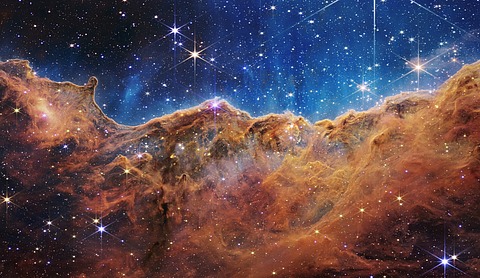
“We can see the unseen. An astonishing deep-field image of crashing galaxies and bygone nebulae. A glimpse at what the death of our own sun might look like. Baby stars being born perched on cosmic cliffs. The first photographs of the JWST are breathtaking, and they will dramatically change how we understand the universe. The scale of our existence on this warming planet is put in great perspective. Astronomy, physics, mathematics, art, music, and our care for each other—made more visible by years of a global pandemic; all different languages trying to understand our minuscule but interrelated existence on this planet and beyond. The opportunity to see further into the universe arises, hand in hand with the pressing need to recalibrate our human disturbance on Earth. As very distant light travels towards us, may we find new paths to repair relations with all beings on Earth. Our very livelihoods depend on it.”
Maka Suarez
Member, School of Social Science
“JWST is by far the most complex and ambitious astronomical observatory that has ever been launched. Its successful operation is a remarkable testament to the dedication and skill of the thousands of engineers, scientists, and managers who designed and built it. The discoveries from the telescope will impact almost every branch of astronomy.”
Scott Tremaine
Professor Emeritus, School of Natural Sciences
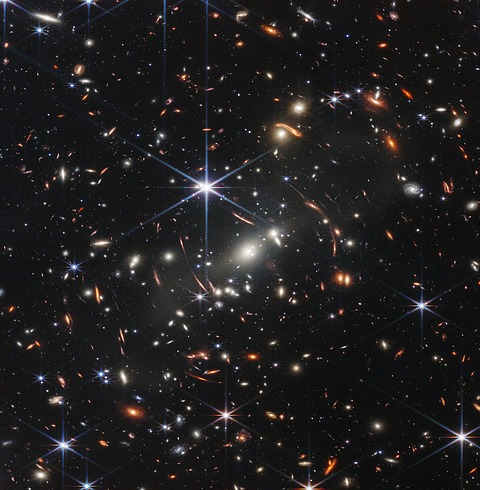
“Is the universe infinite? I treat infinity as an ideal mathematics concept, and I have always believed that the real, physical world is finite. In my definition, the real world is just the stuff around me, experienced by me, or cognized by me. I have a finite life span, so this cannot be an infinite collection.
And then, the James Webb Space Telescope sent back the images. I can now claim that I have seen (in photos) something that stretches 4.6 billion years back in time, and 4.6 billion light-years far in the distance. I feel my real world has become infinitely larger. Seeing these images does not affect the “real” real world for me, but it feels fantastic.”
Hana Jia Kong
Member, School of Mathematics
“We are extremely fortunate to have witnessed the birth of a new JWST era: its last stretch of preparation and testing, its launch in French Guiana, its mirror unfolding in space (although sadly we could only imagine this—there was no selfie camera onboard), and now its first official image release. From these images, we can already see thousands of astrophysical phenomena directly in front of our eyes—distant galaxies, gravitational lensing, binary stars, star formation, and more. These first images not only proved that JWST is working extremely well (yes, I was worried about that!), but also marked a new milestone in humankind's space exploration. With its unprecedented sensitivity in infrared, JWST is now revolutionizing our understanding of the Universe!"
Hsiang-Chih Hwang
Member, School of Natural Sciences
“Very few things worth doing in space are easy, and large space telescopes have had a long history of scientific discovery, astounding images, and developmental complexity. First proposed in 1946, the instrument that became the Hubble Space Telescope endured a protracted period of budget and design battles—as well as a repair in Earth orbit—before it satisfied the scientific community and amazed the public with its astronomical images five decades later. The James Webb Space Telescope’s more recent torturous trip from blueprints to a halo orbit a million miles from Earth seems to be paying off much more quickly, if its first photographs are any indication. Its digital cameras and post-processing regimes have seemingly been designed to produce art as well as science, detecting objects of the early universe and producing some of the most intriguing aesthetic masterpieces yet.”
Matthew Hersch
Visitor, School of Historical Studies
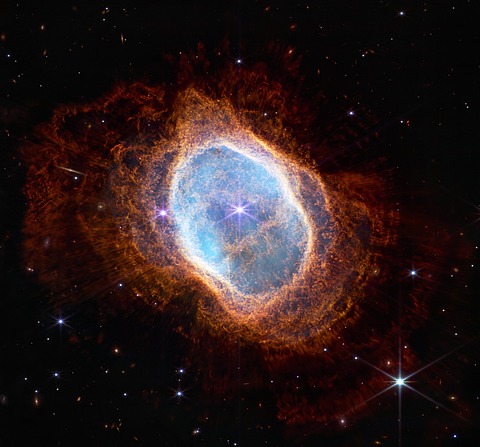
“Big, expensive scientific instruments break all the time. In 2016, a weasel disrupted CERN’s Large Hadron Collider by chewing through an electricity cable. It took engineers a few weeks to get it back online. Repairs to the Hubble telescope have also been necessary in the past. Hubble was launched with a wrongly-shaped mirror which gave terribly distorted images. (Later it was discovered that the culprit was a testing device used to create the mirror, which had a lens that was out of position by 1.3mm). A service crew had to go into space to correct the mirror. There is no such capacity for fixing errors on the JWST. Hubble operates at a relatively low orbit, about 300 miles from Earth. JWST is 1 million miles away—4x further away from the Earth than the moon. So, despite extremely rigorous testing, JWST is nevertheless a 10-billion-dollar gamble. Thus far, everything has gone amazingly well—may this continue long into the future!”
Chris Hamilton
Member, School of Natural Sciences
“The James Webb Space Telescope is an incredible example of what the combined work of many scientific fields can achieve. It gives us a clear view into the distant past of the universe. It also gives us great phone wallpapers.”
Or Zamir
Member, School of Mathematics
